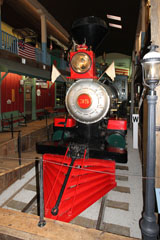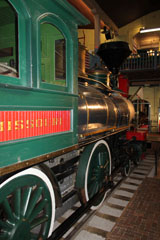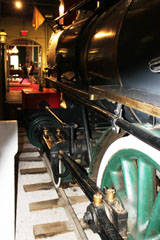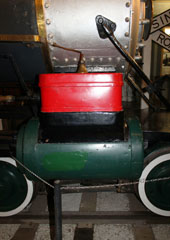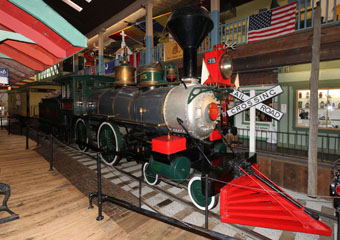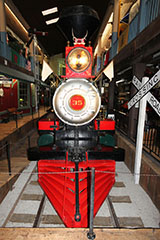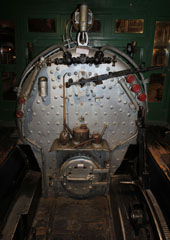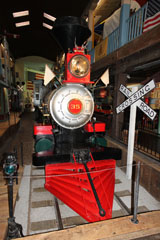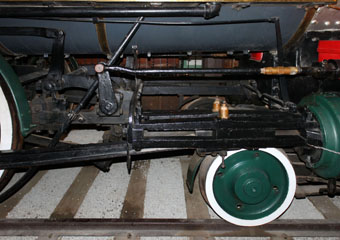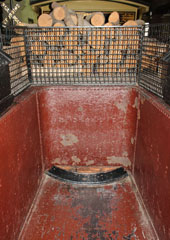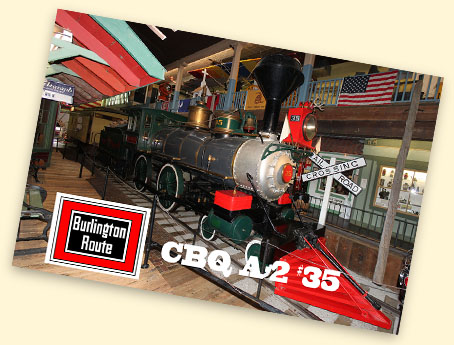

American type (4-4-0) locomotive #35 was built at the Chicago, Burlington & Quincy’s Aurora, IL, shops in 1892 as Hannibal & St Joseph #66. With Stephenson valve gear and 17" x 24" cylinders, it weighs 93,960 lbs, 61,960 lbs on its 64” drivers. A coal burner operating at a boiler pressure of 140 psi, it delivered 12,880 lbs tractive effort.
The H&StJ was the first railroad to cross the Missouri River, running from Hannibal, IL, to St. Joseph, MO. The CB&Q used the line for through traffic to Chicago almost from the start and, in 1883, acquired the road.
#66 was renumbered #666 in 1898 and became CB&Q #359 in 1901 when the H&StJ formally merged with the CB&Q. It was renumbered #35 for the Century of Progress World’s Fair in Chicago in 1933-34 and was also leased as Union Pacific #119 during the 1939-40 New York World’s Fair as well as the 1948-49 Chicago Railroad Fair.
The locomotive was donated to the Patee House Museum in St. Joseph, MO, in 1970.
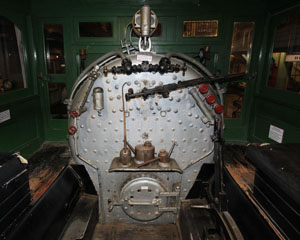
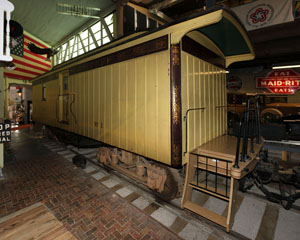
Above, #35 is on display with a replica of Hannibal & St. Joseph #1, the first railroad car in which US Mail was sorted in transit. The original was a refurbished passenger car.
The first experiment in so-called "post offices on wheels" was made in 1862 by William A. Davis between Hannibal and St. Joseph, MO. It was intended to speed connections at St. Joseph with the overland stage, which had replaced the Pony Express routes west a year earlier.


